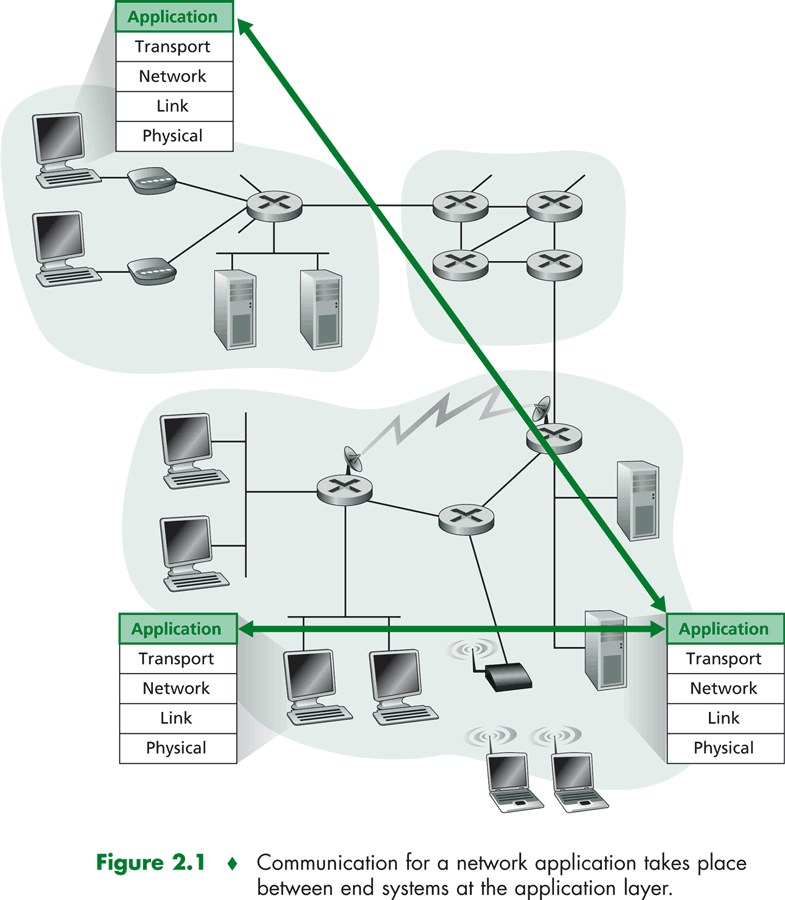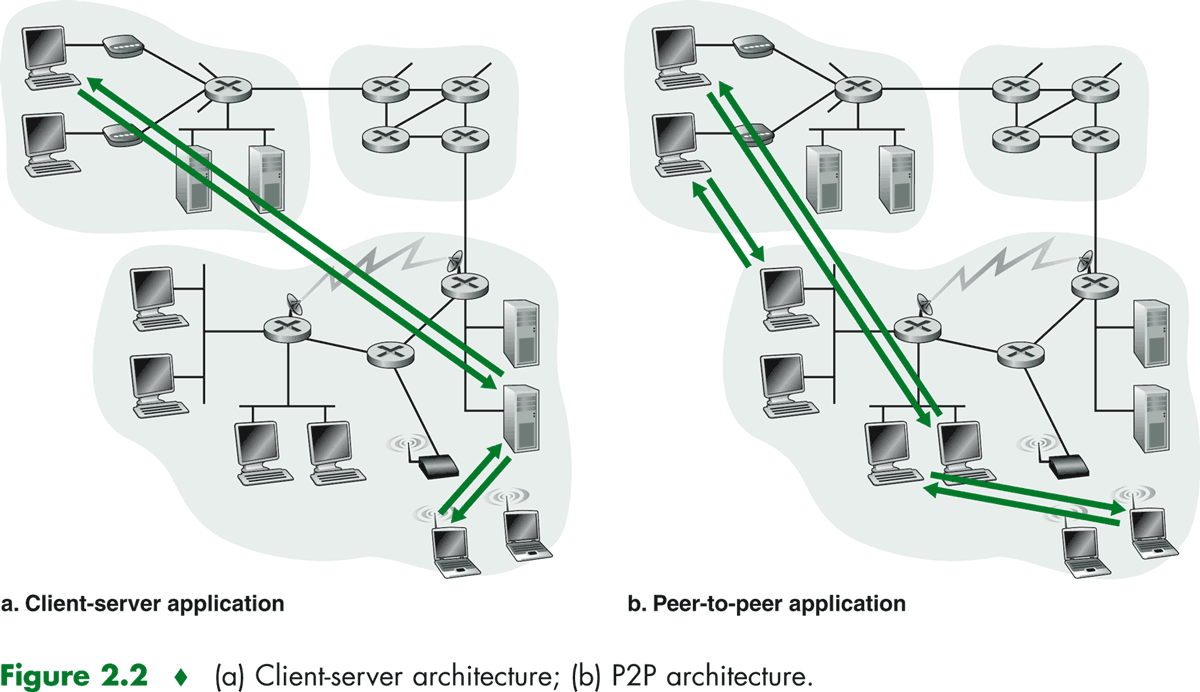|
The application architecture is designed by the application developer and dictates how the application
is organized over the various end systems. In choosing the application architecture, an application developer will likely
draw on one of the three predominant architectures used in modern network appliactions: the client-server architecture, the
P2P architecture, and a hybrid of the client-server and P2P architectures.
In a client-server arcuitecture, there is an always-on host, called the server, which services
requests from any other hosts, called clients. The client hosts can be either sometimes-on or always on.
With the slient-server architecture, clients do not directly communicate with each other. Another characteristic of the
client server architecture is that the server has a fixed, well-known address, called an IP address. Because the server
has a fixed, well-known address, and because the server is always on , a client can always contact the server by sending a
packet to the server's address.
Often in a client-server application, a single server host is incapable of keeping up with all the requests from
its clients.

For this reason, clusters of hosts--sometimes referred to as a server farm--are often used to crreate
a powerful virtual server in client-server architectures.
In a pure P2P architecture, there isn't an always-on server at the center of the application.
Instead, arbitrary jparis of hosts, called peers, communicate directly with each other. Because the peers communicate
without passing thorugh some special server, the architecture is called peer-to-peer. One of the greatest strengths
of the P2P architecture is it scalability.
While each peer will generate workload by requesting files, each peer also adds service capacity to the system by responding
to the requests of other peers. P2P file sharing is intrinsically scalable--each addtional peer not only increases demand
but also increases service capacity.

It remains an open question whether it is possible to build industrial-strength P2P solutions for enterprise applications.
Many applications are organized as hybrids of the client-server and P2P architectures.
|



